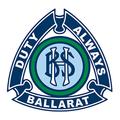Literacy News

NAPLAN
Our year 7 and 9 students completed four NAPLAN tests between May 11th and May 21st and it was evident that students approached NAPLAN tests in the same way they approach all learning tasks; giving the tests their best effort. Since 2018 Ballarat High School has been using the Online platform for the NAPLAN tests and more than half of public schools had students complete the Online tests this year. What was communicated with students prior to the NAPLAN tests was that the tests are only one point of reference in their Literacy and Numeracy development that give the school and parents a snapshot of how students are tracking in these areas. Results are usually distributed to schools early in September and will be sent out to parents as soon as they arrive at school.
Year 7 Literacy Support
Each year our year 7 Literacy facilitator Wendy, completes extensive testing with our year 7 students in term one. After the testing is complete, offers of support are sent home for the identified students who would benefit from more intensive literacy support. This support happens during two fifty-minute sessions in small groups of four or five, with the focus alternating between targeted reading comprehension activities and students completing a number of online comprehension, grammar, punctuation and spelling activities. It is fantastic to see the students enthusiastically engaging in these sessions.
Year 8 and 10 Middle Years Literacy and Numeracy Support
Year 8 and year 10 students who have yet to consolidate appropriate reading, or numeracy strategies have the opportunity to receive more support in their literacy and numeracy development. Eligibility is linked to our PAT testing and previous years NAPLAN reports. The Middle Years Literacy and Numeracy Support (MYLNS) initiative was implemented as there is a clear link that shows students who have solid Literacy and Numeracy skills usually achieve better outcomes when they enter the workforce. This support takes the form of an extra teacher going into one of their English and/or Mathematics classes and providing extra support for the identified students. Last year had an impact on students in a number of different ways and the MYLNS initiative is another way we are working toward addressing the gaps in Literacy and Numeracy development that our students might have.
Tom Arnold
Leading Teacher, Literacy
